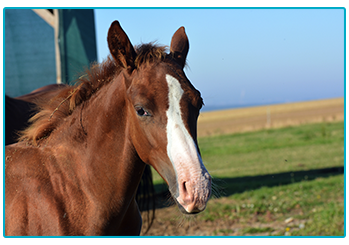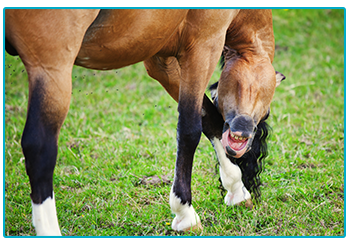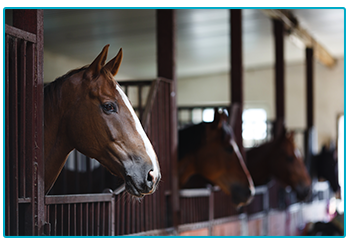Already this summer, the UK has been basking in some unseasonably hot weather. With temperatures reaching up to 34.5C at Heathrow in June, the hottest on record since 1976. Brits responded in typical fashion wheeling out barbecues, flocking to the beaches and generally beginning to plan their hot weather adventures. Animals love the summer just as much as we do, so it has been great for us to get out and enjoy the fresh, if somewhat warm air, with our horses. However, the sun can pose a risk that we may not be aware of. We spoke to our horse health expert to find out more.

Sunburn
Horses are just like human beings, covered in skin and prone to suffering during bouts of extreme sunlight. Pigmentation in any skin is meant to protect against the harmful effects of UV rays. This means that horses with little or no pigmentation, typically white animals with areas of pink, exposed skin, are more prone to sunburn. The face and the heels are the areas on these horses that are most likely to be affected. The sun is also likely to have a more damaging effect on horses with thinner coats, or ones that have been clipped recently, so owners should be careful when letting them out in strong light.

Photosensitisation
The damaging effects of ultraviolet rays can pose more of a problem in some horses due to a condition known as photosensitisation, which increases a horse’s sensitivity to sunlight. This condition can occur when a horse has been exposed to photosensitive agents through medical treatment, ingestion or absorption through the skin. For example, photosensitive agents are present in St John’s Wort and buttercups (which can also be toxic to horses). A horse may also suffer from photosensitisation, secondary to liver failure. Affected horses will scratch or rub their skin when exposed to sunlight and may develop skin lesions including blisters.

Prevention
Again, as with many health problems affecting horses, much of the risk can be averted simply by applying common sense. Just as with humans, to prevent sunburn on non-pigmented skin areas, apply sun screen with a high SPF. You can use face masks and nose veils to help protect the more sensitive areas of your horse’s face. Ensure that your horse has plenty of shade whilst grazing and try to stable them during the hottest part of the day. If you do discover that your horse’s skin has begun to blister and become sore, then you should contact your vet immediately.
Horse ownership is all about responsibility. You should make sure the right measures are put in place so that your horse can enjoy its summer adventures just as much as you do. If you are unsure there is plenty of helpful advice online or you can seek a professional opinion from your vet. It may be worthwhile to help avoid a distressing and expensive visit in the future.
All content provided on this blog is for informational purposes only. We make no representations as to the accuracy or completeness of any information on this site or found by following any link on this site. We will not be liable for any errors or omissions in this information nor for the availability of this information. We will not be liable for any loss, injury or damage arising from the display or use of this information. This policy is subject to change at any time.


